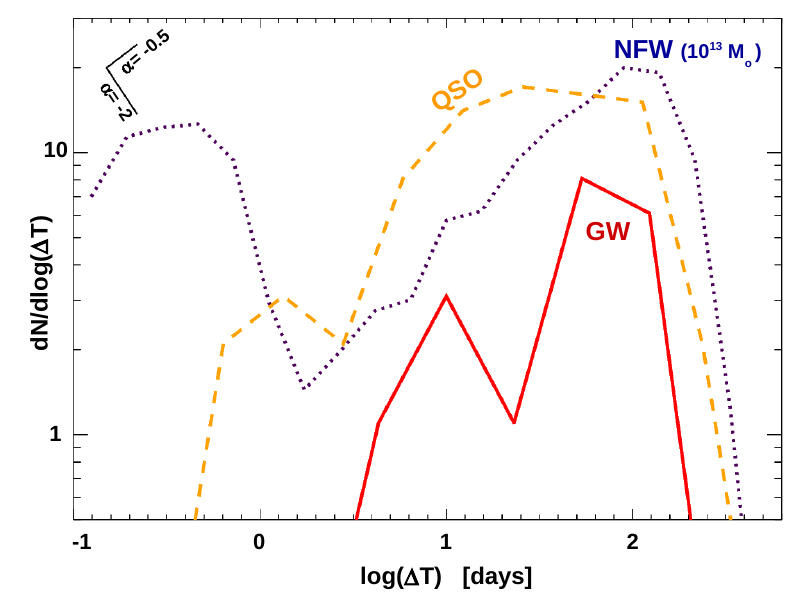The quest for lensed gravitational waves
We are all subject to personal biases, even when we try not to be biased. In Science, a popular tool to select among a variety of models is inspired on Bayesian theory. According to this theory, the most likely model is the one that offers the best description to the current data (i.e fits the data), and given by its likelihood, but also is consistent with previous knowledge on some of the parameters that are being fitted. Previous information is accounted for by a term known as the prior. Good priors result in fairs results. Biased priors often lead to the wrong conclusion.
In a recent paper, the LIGO-Virgo collaboration (LVC) studies the possibility that gravitational waves (GW) are being strongly lensed. If lensing is taking place, a fundamental prediction from gravitational lensing theory is that multiple occurrences of the same GW should take place, with a time separation between them of typically days to months. LVC presents a series of candidates which show high consistency with the lensing hypothesis, or in the Bayesian terminology, have a good likelihood of being pairs of images of the same GW. All these pairs are later discarded as possible lensed images based on the prior term, that heavily penalizes pairs of GWs separated by more than a few weeks. They finally concluded that lensing of GWs is unlikely, based on their final score.

This is however a conclusion that is obtained after adopting potentially bad priors. The LVC does not provide sufficient information regarding their prior, but in a recent study we show how the prior used by LVC is in tension with observations of time delays from real gravitationally lensed pairs of images. In fact, the distribution of time delays between the pairs of gravitational waves which LVC found to be good candidates to be strongly lensed, is consistent with the known distribution of time delays from quasars and from analytical models.
LVC finds that approximately half the events published in the O3 catalog can form pairs of lensed GW events (that is, there is another GW which shows high consistency in terms of GW parameters and sky localization, as predicted by lensing). As shown in the image accompanying this post, the separation in time between the two GWs forming the pair (solid red curve) is consistent with the known distribution of time delays (dashed orange curve). In the LVC analysis, pairs of GWs with time separations of approx 4 months are directly assigned a probability of zero, contradicting real observations where such time delays are possible. LVC concludes that none of their candidates to be pairs of gravitationally lensed GWs favours the lensing hypothesis, but this conclusion is biased by the adoption of a prior that intrinsically negates the possibility that realistic time delays are possible.
The use of a better (unbiased) prior does not necessarily mean that the opposite conclusion is true (ie. that lensing is favored), but it begs the question of whether the conclusions from LVC could have been reversed.
If you want to find more about this discussion you can check our latest work, or our earlier work where we present a model that predicts that gravitational lensing of GWs has already been observed.
